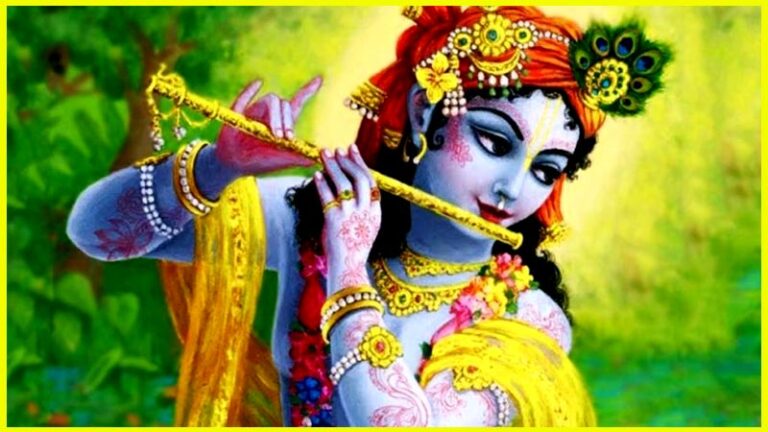“Shree Krishna” is a term used to honor and refer to Lord Krishna, a prominent deity in Hinduism. Lord Shree Krishna is considered as the eighth avatar of the God Vishnu, who is believed to have incarnated on Earth to restore righteousness (dharma) and alleviate suffering. The life and teachings of Krishna are documented in various Hindu scriptures, most notably in the ancient epic, the “Bhagavad Gita,” where he imparts spiritual wisdom to the warrior prince Arjuna on the battlefield of Kurukshetra. Krishna is revered for his divine qualities, including his playfulness as a child (as depicted in stories of his childhood, especially his antics in Vrindavan), his role as a charioteer and advisor to Arjuna, and his deep philosophical teachings on duty, righteousness, and devotion. He is also known for his close association with Radha, his eternal consort, symbolizing the divine love between God and devotees. Krishna’s teachings and his divine acts have made him a central figure in Hinduism, inspiring devotion, art, literature, and philosophy for millennia.
Table of Contents
Lord Krishna Birth Date & Early Life
Lord Krishna was born to Devaki and Vasudeva in Mathura. He was born in July, 3228 BCE. Experts have zeroed in on the third week of July, but the exact date differs in their calculations, as some say it is the 18th, some say the 19th and some even say it is the 21st of July.
To protect Shree Krishna from the evil King Kansa, who sought to kill him, Krishna was miraculously transported to Gokul, where he was raised by his foster parents, Yashoda and Nanda. His childhood is filled with legendary tales of his mischievous exploits, such as stealing butter (Makhan Chor) and playing pranks on the villagers.
Shree Krishna’s Divine Acts
Krishna performed numerous divine plays during his lifetime, showcasing his divine powers and teaching valuable lessons. These include lifting the Govardhan Hill to protect the villagers from Indra’s wrath, dancing on the serpent Kalia’s hoods to subdue him, and defeating demons like Putana, Trinavarta, and Bakasura.
Mahabharata
Krishna played a pivotal role in the epic Mahabharata, serving as the charioteer and guide to Arjuna in the Kurukshetra War. He delivered the Bhagavad Gita, a profound discourse on duty and righteousness, to Arjuna on the battlefield.
Radha Krishna Ras Lila
Krishna’s divine love for Radha and the Gopis (cowherd girls) of Vrindavan is celebrated in the Rasa Lila, where they engage in enchanting dances and divine love exchanges, symbolizing the soul’s longing for union with the Divine.
Shree Krishna’s Flute
The melodious sound of Krishna’s flute is symbolic of divine enchantment and captivates all beings, drawing them closer to him. It represents his ability to attract devotees and souls towards the path of spiritual liberation.
Krishna’s Teachings
Krishna’s teachings emphasize the importance of performing one’s duty (dharma) without attachment to the fruits of actions, surrendering to the divine will, and cultivating devotion (bhakti) as the highest form of spiritual practice.
Krishna’s Departure (Bhagavata Purana)
According to the Bhagavata Purana, Krishna departed from the Earth at the end of his earthly pastimes, returning to his divine abode, Vaikuntha. This event is known as the “Mahaprasthan” or the “Great Departure.”
The life and teachings of Shree Krishna continue to inspire millions of devotees worldwide, serving as a beacon of love, wisdom, and spiritual enlightenment in Hinduism.
You may also like –
Shree Krishna Janmashtami 2023: Date, Rituals, Facts & Quotes
Shri Krishna Govind Hare Murari – श्री कृष्णा गोविन्द हरे मुरारी
Achyutam Keshavam Krishna Damodaram – अच्चुतम केशवं कृष्ण दामोदरं

